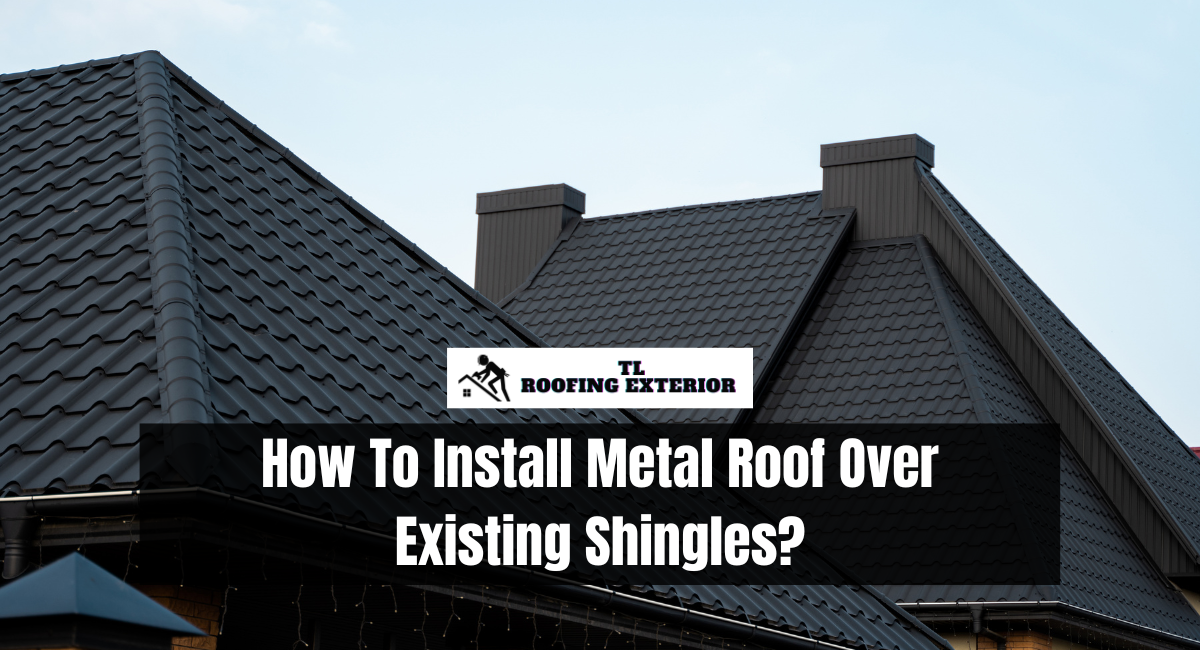Installing a metal roof over an existing asphalt shingle roof can be a practical and cost-effective option for homeowners seeking to upgrade their roofing without incurring the time and expense of a complete tear-off. Metal roofing offers durability, energy efficiency, and a streamlined appearance, making it a popular option.
To ensure that the new roof performs optimally, the success of this endeavor is contingent on careful planning and execution. This article, will explain how to install metal roof over existing shingles.
How To Install Metal Roof Over Existing Shingles?
Materials And Tools
- Metal roof shiRoof insulation
- Roofing nails
- Felt or synthetic roofing underlayment
- Roofing screws
- Roofing flashing and roofing boots
- Metal ornamentation (eave, gable, ridge, and corner ornamentation)
- As a sealant
- Safety equipment for the roof (harness, safety eyewear, gloves).
Instruction
1. Safety Precautions
Put safety first at all times. Ensure you have the proper safety equipment, such as a safety harness and hard hat if you are working at heights, safety eyewear to protect your eyes, and gloves to protect your hands.
2. Evaluate Existing Roof
Before beginning installation:
- Inspect the existing shingles meticulously.
- Examine the roof for signs of damage, deterioration, or missing shingles.
- Resolve any issues you discover; a solid foundation is essential for successfully installing a metal roof.
3. Measure And Order Materials
Precise measurements are required to order the correct quantity of metal roofing panels, underlayment, and other materials.
Consult with your supplier and contain the materials based on the dimensions and specifications of your roof.
4. Prepare The Roof
Remove any residue from the surface of the existing shingles to create a smooth, debris-free surface. Remove any debris, leaves, and shingle granules that are loose.
Repair or replace any roofing that is damaged or loose. If your roof deck is in excellent condition and you use the metal-over-shingle method, you may not need to remove the shingles, but you must ensure the surface is level.
5. Install Eave And Gable Trim
Install eave and gable trim along the roof’s margins to begin. This trim gives these vulnerable areas a tidy, finished look while protecting them. Use roofing fasteners or nails to secure the trim, ensuring a secure fit.
6. Install Roof Underlayment
Install the underlayment over the prepared roof surface (synthetic or traditional felt paper). Commence at the eaves and work up the roof, precisely overlapping each course.
Use roofing nails to secure the underlayment, adhering to the manufacturer’s recommendations for fastener spacing.
7. Install Metal Panels
As this is the typical beginning point, begin the installation at the eaves. Utilize roofing screws to fasten the metal panels to the roof platform.
Follow the manufacturer’s recommendations for fastener type and spacing. To create a watertight seal, use fasteners with rubber washers or gaskets. As necessary, trim the panels to fit around roof features such as ducts, chimneys, and skylights.
8. Install Flashing And Boots
Install flashing around roof penetrations, including exhaust pipes, chimneys, and skylights. Utilize roofing boots to create a hermetic seal where these penetrations meet the metal roofing.
It is essential to secure penetrations to prevent water infiltration properly.
9. Ridge Cap Installation
Install ridge covers along the roof’s ridge to give it a finished appearance and provide additional weather protection. Additionally, ridge caps safeguard this vulnerable area of the roof.
10. Seal And Finish
After installing the metal panels, inspect the entire roof for seams, penetrations, and protruding fasteners. Use a high-quality sealant compatible with your roofing material to seal these areas.
Proper sealing is essential for preventing water leakage and ensuring a roof is watertight.
11. Inspect And Clean
Conduct a comprehensive roof inspection once the installation is complete to ensure no loose panels, unsealed areas, or other issues. Remove construction debris and installation residues from the roof.
Can A Metal Roof Be Installed Directly Over Shingles?
Yes, installing a metal roof directly over existing shingles using the “metal-over-shingle” or “metal-over-metal” method is possible.
However, it is essential to assess the condition of the existing shingles and ensure that they are secure and appropriate for the new layer.
Installation success requires proper preparation, including cleansing, underlayment installation, and sealing. Consult the manufacturer’s instructions and local building codes for specific recommendations and requirements.
Why Is Installing A Metal Roof Over Shingles Problematic?
Installing a metal roof over shingles can result in several potential complications. The added weight of the second roofing layer, which can burden the roof structure, is the most significant issue. Some roofs may be unable to sustain this additional weight, leading to structural problems.
In addition, trapped moisture between the layers can lead to corrosion, and the underlying shingles can generate an uneven surface that affects the appearance and performance of the metal roof. Preparation and evaluation are essential to resolve these issues.
Although installing a metal roof over existing asphalt shingles is a viable option, adhering to best practices and local building codes is essential. Prioritize appropriate preparation, underlayment, and fastening techniques to ensure the performance and longevity of your metal roofing system. Consult with professionals if you are uncertain about any aspect of the installation to achieve a roofing upgrade that improves the durability, energy efficiency, and aesthetics of your home.
Read More: What Is The Best Material For Fascia Boards?
